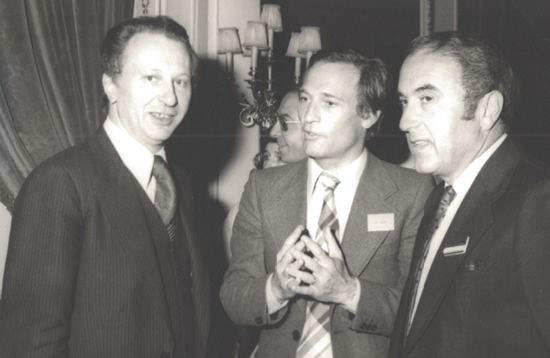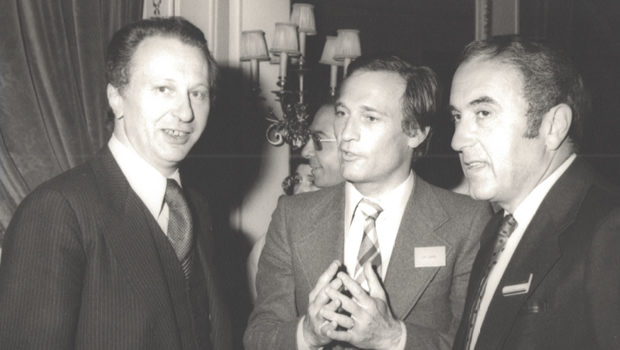From 20 – 22 April 1977, the International Conference on the Use of Fabrics in Geotechnics was held in Paris, France. This watershed event included a paper from engineer Dr. J.P. Giroud in which he coined two terms that have become central to the field of geosynthetics: “geotextile” and “geomembrane.”
The Paris gathering, which would later be recognized as the 1st International Conference on Geosynthetics, introduced many new users to the fast-developing field of geosynthetics. More importantly, it connected many companies, universities, and individual engineers who had already been furthering understanding of the materials but doing so with the support of one another. Having come together, a real industry and engineering field began to develop. They identified needed characteristics for these construction materials, research need, manufacturing potential, applications for adoption, design methodologies, etc.
Six years later, Paris again hosted another watershed moment in geosynthetics: the founding of the International Geosynthetics Society.
It must be noted that geosynthetics were already being used by 1977 in numerous applications, even if the term “geosynthetics” had not yet been coined. Dr. Giroud’s paper from 1977 detailed his 1970 design for Valcros Dam using geotextiles (typically known as “filter fabrics” then). Also, a small but useful number of journal articles were emerging too, such as Prof. Robert Holtz’s detailing of early geosynthetic-reinforcement of embankments in 1970s Sweden. Further to the early use of geotextiles, Prof. Georg Heerten published an article in 1984 in the very first issue of the renowned journal Geotextiles & Geomembranes. His topic: “Geotextiles in coastal engineering—25 years experience.”
So the 1977 conference served as confirmation for many that these polymeric materials were advancing, that a core group of practitioners was developing, and that manufacturers were investing in the R&D and outreach needed to support the field’s next phase.
By 1980, the first textbook on geosynthetics was published: Construction and Geotechnical Engineering Using Synthetic Fabrics, was published (J. Wiley & Sons). Dr. Robert Koerner co-wrote the text with Joseph Welsh. Koerner went on to be one of the most influential figures in geosynthetics, founding the Geosynthetic Institute and publishing 6 editions of the seminal work Designing with Geosynthetics.

INTERNATIONAL CONFERENCE ON GEOSYNTHETICS SERIES
The topics of the First International Conference on Geosynthetics (ICG) were not all that different from what we continue to advance today. Some example from the conference:
“Membranes and the Bearing Capacity of Roadbases”
“Fabric Filter for Improving Frost-Susceptible Soils”
“Deformations of Soil Foundations Reinforced with Pre-stressed Synthetic Fabric”
“Wall Reinforced by Fabrics – Results of Model Tests”
The energy and interaction forged by the event was sustained by the professionals who attended and helped in the development of a second conference (supported by the Industrial Fabrics Association International). That gathering was later recognized as the 2nd International Conference on Geosynthetics (2ICG), after which the ICG conference series was formally developed. It continues as a quadrennial event.
THE ICG SERIES
- 1977 – Paris, France
- 1982 – Las Vegas, USA
- 1986 – Vienna, Austria
- 1990 – The Hague, the Netherlands
- 1994 – Singapore
- 1998 – Atlanta, USA
- 2002 – Nice, France
- 2006 – Yokohama, Japan
- 2010 – Guarujá, Brazil
- 2014 – Berlin, Germany
- 2018 – Seoul, Korea
- 2023 – Rome, Italy
For information on the 12th International Conference on Geosynthetics, visit www.12icg-roma.org.
LASTING IMPACT
The 1st International Conference on Geosynthetics validated the foundation of the modern, global geosynthetics industry. Since the Paris gathering, geosynthetics have continued to benefit from a rich international exchange of information. Geosynthetic materials and systems have been incorporated into every major sector of civil engineering. They’ve enabled constructions not previously possible and have extended the service life, sustainability, and economical nature of others.
Dr. Giroud was even recognized in April 2010 with France’s highest decoration: membership of the Order of the Legion d’Honneur. In a statement, the Legion described Dr. Giroud’s contribution to engineering in terms very similar to what geosynthetics have accomplished in the field: “…the most beneficial impact on the environmental protection of the ground.”












